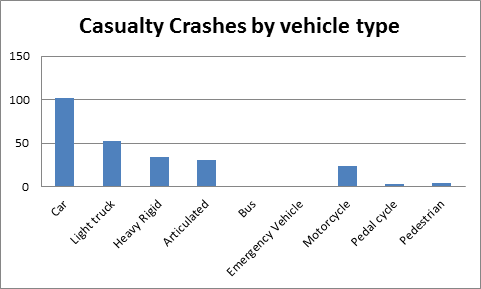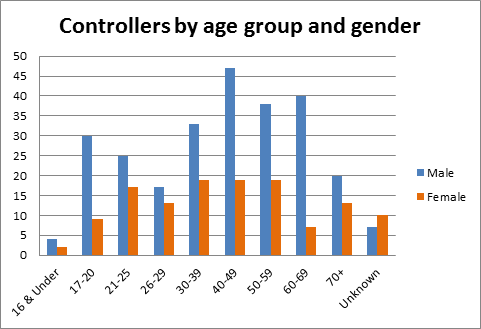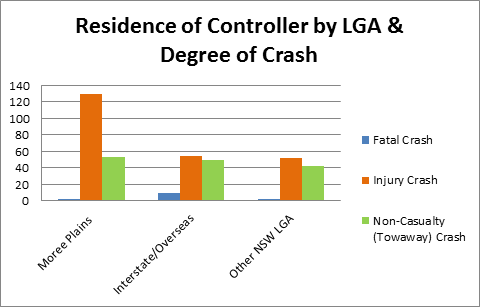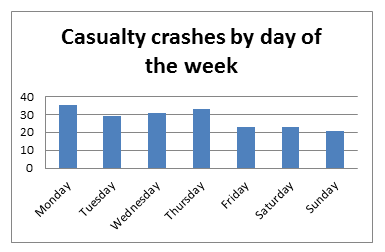Road Safety
Road safety is an important element of the core business of Moree Plains Shire. Council has a strong commitment to improving road safety outcomes through the implementation of a coordinated partnership approach.
Achieving lasting change in road safety will require council, industry and the broader community to work together. Moree Plains Shire Council acknowledges that Road safety is a shared responsibility and that changes to the way people think and act about road safety – whether it be road planners, designers or builders, vehicle engineers or fleet operators, policy makers or business professionals, or individual road users going about our everyday activity is required to achieve our road safety goals and as such have adopted the Safer Systems approach to road safety.

The initiatives and options are set out in four key areas: Safe Roads, Safe Speeds, Safe Vehicles and Safe people. The Safe System approach is underpinned by three guiding principles:
|
Awareness campaigns targeting all aspects of road user safety have been designed and implements, such as:
|
National Child Restraint Laws:
All children must be safely fastened in the correct child car seat for their age and size. A child who is properly secured in an approved child car seat is less likely to be injured or killed in a car crash than one who is not.
|
If your child is too small for the child restraint specified for their age, they should be kept in their current child restraint until it is safe for them to move to the next level. If your child is too large for the child restraint specified for their age, they may move to the next level of child restraint.
Local Crash Statistics
Crash Fact One - Casualties
Between 2013 – 2017 there were 245 casualties (people killed or injured) in the Moree Plains Shire in 173 casualty crashes. Of this number 12 were killed (around 5% of all casualties).
Killed |
Seriously Injured |
Moderately Injured |
Minor/Other Injured |
Total |
| 12 | 46 | 110 | 77 | 245 |
Crash Fact Two - Behavioural Factors in Casualty Crashes
In the Moree Plains Shire speed, alcohol and fatigue are all significant casualty crash factors.
| Speed | 17.9% |
| Alcohol | 3.5% |
| Fatigue | 16.2% |
Crash Fact Three - Types of Vehicles
Cars are the primary vehicle type involved in crashes where people are killed or injured, involved in 59% of casualty crashes.
Trucks are involved in over 50% of casualty crashes across the shire. Over 30.6% of truck crashes involved light trucks. Around 18% of truck crashes involve articulated trucks (articulated tanker, semi-trailer, low loader, road train and B-double).
Motorcycles are involved in 14.4% of crashes.
Crash Fact Four - Gender and Age of Road User

Young people represent a significant number of vehicle controllers. Around 32% of all vehicle controllers across the Shire are young people aged between 17 – 29 years.
Other high risk groups are people aged 40 – 49 years, representing 17% of all controllers, and people aged 50 - 59 years representing 14.7% of all controllers .
Males represent around 67% of all controllers, with high risk groups mirroring those mentioned above.
Crash Fact Five - Day of the Week and Month of Year Most Likely to Crash
Over a 24 hour day the risk of having a crash is greatest on a Tuesday and Friday. However, the risk is not significantly different across most days of the week. September has a significantly higher crash rate than other months. Most other months have a consistent rate of crashes, although the June and August crash rates are low at around half the crash rate of September.

Crash Fact Six - Residence of Controller Involved in Casualty Crashes

Around 47% of motor vehicle controllers involved in casualty crashes reside in the Moree Plains Shire.
A significant number of controllers (27%) involved in crashes reside interstate or overseas. Given Moree Plains Shire’s proximity to the Newell Highway, it is likely that a high proportion of interstate residents are traveling from or towards the Queensland border.
Outside of Moree Plains, residents from Gwydir (2.2%) and Narrabri (2.2%) have the highest NSW resident casualty crash involvement.
Crash Fact Seven - Crashes by Road Classification
Over 67% of the casualty crashes occur on State Highways and other classified roads in the Moree Plains Shire. Remaining crashes occur on local roads.

Crash Fact Eight - Class of License
People holding standard licenses are those most likely to be involved in a fatal or injury crash within the Moree Plains Shire (42%).
Motor vehicle controllers on a provisional license are at some risk, attributing to nearly 5% of all fatal and injury crashes.
Similarly, unlicensed drivers were involved in nearly 4% of all fatal and injury crashes. Only 1.5% of casualty crashes involved a learner driver.
Crash Fact Nine - Pedestrians
Of the 11 casualty crashes recorded, one pedestrian was killed in 2014. Pedestrians account for 9.1% of all those killed or injured on roads.
Crash Fact Ten - Pedal Cyclists
The number of reported crashes involving pedal cyclists is low as a percentage of the crash problem in the Moree Plains. Pedal cyclist crashes make up less than 2% of crashes.
For further information about Road Safety in NSW
Email: This email address is being protected from spambots. You need JavaScript enabled to view it.
Phone: (02) 6757 3222
